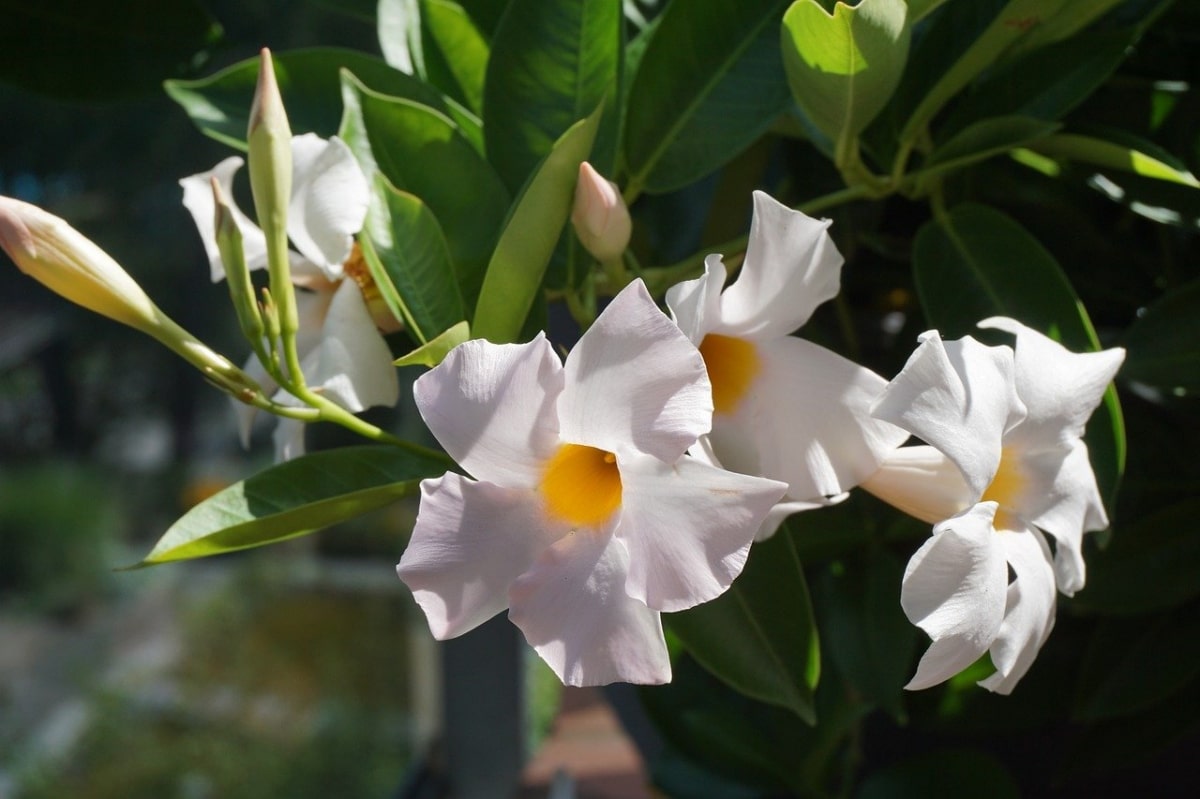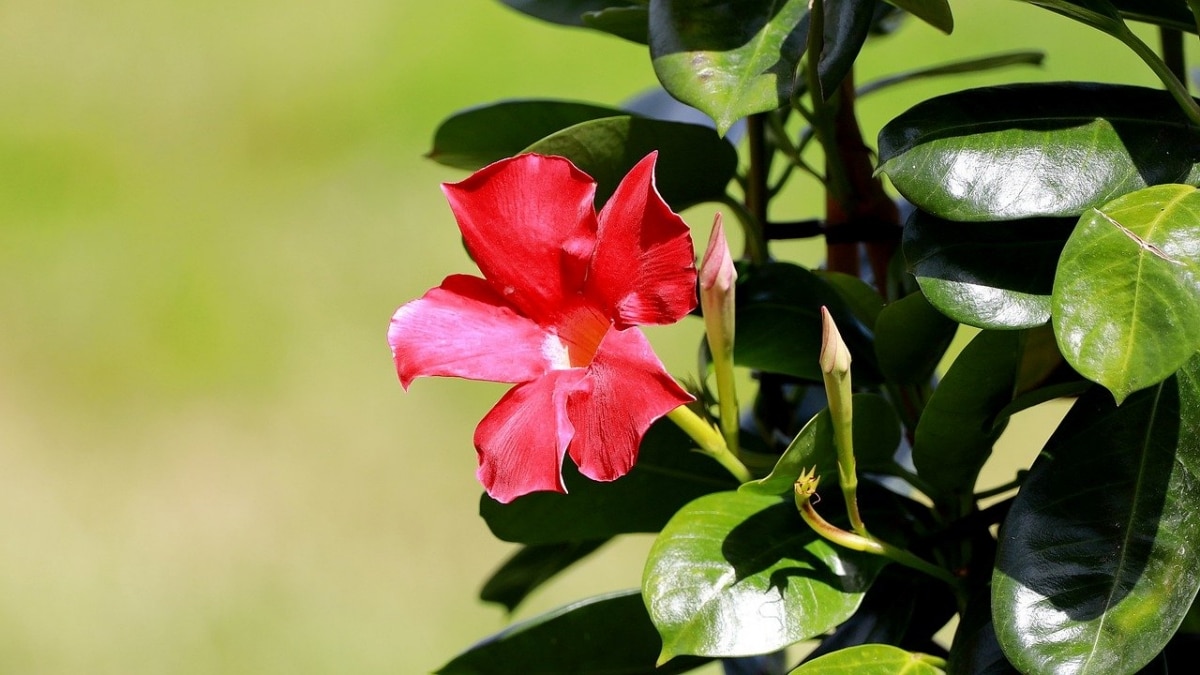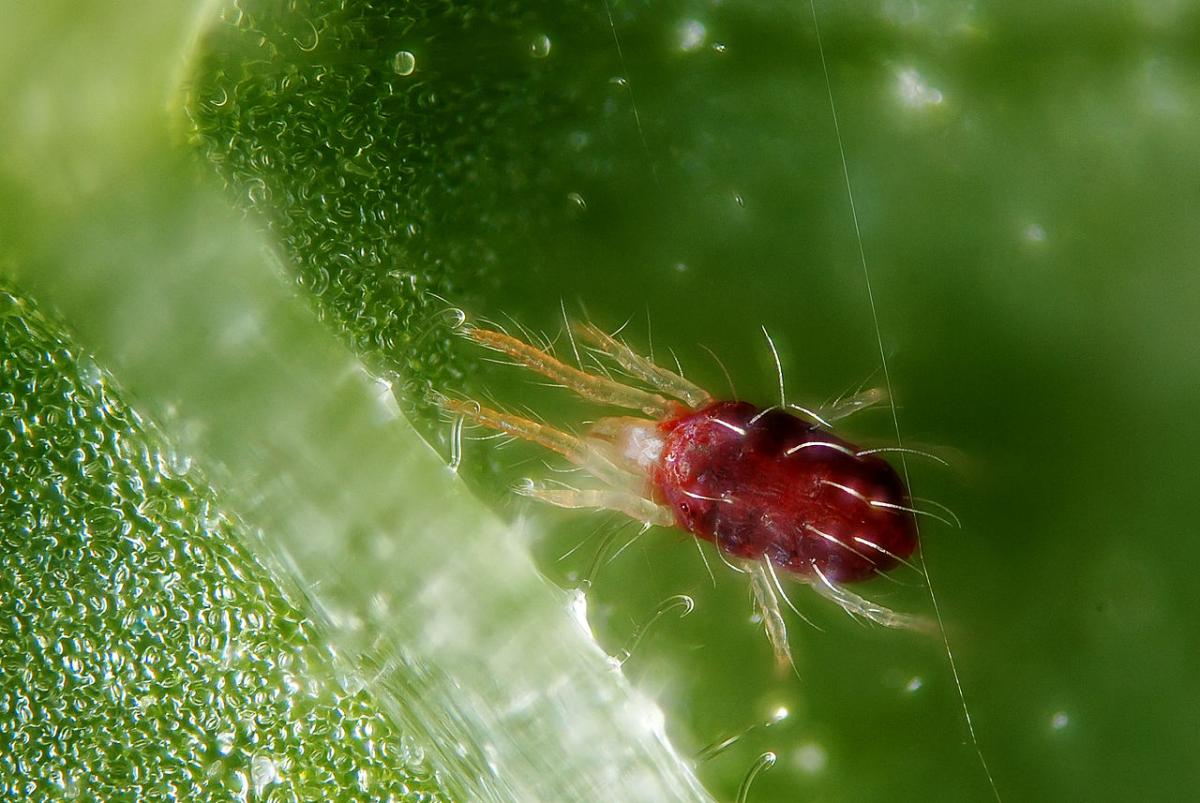
Dipladenia is a tropical climber that has beautiful bell-shaped flowers that bloom throughout the spring and summer. One of the many interesting features that it has is that, unlike other vines, it does not grow as fast. In addition, the height that it reaches is less than that of the most common climber species; in fact, that is one of the reasons why it is possible to grow it in a pot throughout its life.
It's so popular that we want you to know what the care of dipladenia is, because it is a plant that looks very pretty in gardens and terraces, but also indoors.
What are the care of dipladenia?
It is a very beautiful plant, but to keep it that way all year round, it has to be taken care of. Therefore, below we will tell you everything you need to know so you can enjoy it:
Is dipladenia an indoor or outdoor plant?
Before getting into the matter, we are going to clarify this topic since that way we will know where to place it. Well, the dipladenia, also known by the names of mandevilla or Chilean jasmine, is a plant that lives in tropical America, such as Ecuador. Because, it does not like the cold, although it can withstand it without suffering damage if the temperature does not drop below 10 degrees centigrade; in the event that it falls further, it will lose its leaves, and if there is frost it will die.
Therefore, it is a plant that, in cold climates, it is kept indoors (at least in winter), but in warm climates it can be kept outdoors year-round. At most it measures 5 meters high as long as it has support, and as its stems are thin, it is used both to cover small lattices or arches, and to decorate the house.
Sun or shade?
It can be both in the sun and in semi-shade, but inside the house it has to be placed in a room where there is a lot of light since otherwise it will not be able to grow well.
What land do you need?
The mandevilla is not a very demanding plant, but whether it is planted in the garden or kept in a pot, it is important that the soil is rich in organic matter, light and that it does not compact to the point of stopping absorbing water. For this reason, if the soil in your garden is not like that, it is advisable to make a large planting hole, at least 1 x 1 meter, pour a layer of about 40 centimeters of construction sand (gravel, 2-3 mm thick) or if you prefer volcanic clay, and then universal growing substrate of any of these brands: Flower (for sale here), Fertiberia, Boom Nutrients, Weedness (you can buy it here).
If you don't have soil to plant it in, if it's cold in winter and/or if you want to keep it in a pot, you can plant it with one of the substrates mentioned above. But yes: keep in mind that this container must have drainage holes in its base, because if it is planted in one that does not have it, the water that accumulates inside will rot it.
When to water dipladenia?
It is a climber that does not resist drought, so you have to be a little aware of the state of the land. As long as it doesn't rain, during the summer you may have to water it about 3 times a week (for example: Monday, Thursday and Saturday), and that during the rest of the year one or two weekly irrigations are necessary. But everything will depend on the climate in your area and whether you have it inside or outside the house, and if it happens that you have it indoors, it is possible that during the winter you only have to water once a week. week or every 15 days.
To give you an idea, I have one in a room where the highest temperature during the winter is about 17ºC and the minimum is 9ºC. In addition, the ambient humidity is high, above 70%, so the soil takes a long time to dry. Do you know how often you have to water it? Well, normally it is watered once a week, but there have been times that I have gone two weeks without doing it.
In the event that you are not sure when to water, it is highly advisable to use a soil moisture meter, such as this. Not that it is the most useful tool in the world, but it is a good guide. And you only have to stick it in the ground to know if it is dry (Dry) or not.
By the way: if it's going to be in a pot, you can put a plate under it, but never forget to drain it after watering. This way, the soil can dry out a bit until you need to water again.
Does it have to be sprayed with water?

In many places they will tell you yes, but the truth is that depends. If you live on an island or near the coast, and if you have it indoors, these sprays will only favor the appearance of fungi. Why? Because in those places the environmental humidity is high in itself, and if we also pour water on the leaves, we create a perfect environment for these microorganisms to proliferate.
Therefore, it should only be sprayed in case the ambient humidity is low. And even so, it will always be better to place containers with water around it than to spray it. In any case, if you are going to do it, use rainwater, distilled water or one that has little lime.
When to pay dipladenia?
In principle, it will suffice to pay it during the warm months, since that is when it grows the most. But if the temperatures are mild in winter, that is, if they stay above 10ºC, it will also be interesting to do it during that season. But what fertilizers to use?
- Spring and summer: Fast-acting fertilizers, such as guano, will be used. You can also use fertilizers for flowering plants, or universal crops such as this.
- The rest of the year: will be paid with slow-release fertilizers, such as this.
In any case, the instructions on the package must be followed so that there are no problems.
When and how to plant it in the garden or change its pot?

Esto it is done in spring, following this step by step:
Planting in the garden
If you want to have it in the garden, point:
- Choose a sunny place where there is something that serves as a support for your dipladenia (it can be an arch, latticework, fence, etc).
- Make a hole big enough for it to fit nicely. Remember that if the soil is very compact and poorly drained, it is advisable to make it 1 x 1 meter in order to fill it first with a thick layer of volcanic clay (you can buy it here) or gravel, and then with a growing medium.
- Remove the dipladenia from the pot carefully.
- Insert it into the hole, and if you see that it is too low, take it out and add more soil. Keep in mind that the surface of your root ball should be just a little below -no more than 2 centimeters- the level of the soil in your garden.
- Finish filling the hole and water.
- Introduce a tutor to help the climber grow where you want.
- And now all that remains to be done is to attach some stems to the support with cable ties or wire. Strings, fabric rubber bands and the like should not be used as they could become a breeding ground for bacteria and fungi.
Pot change
To change the pot you just have to carefully extract it and plant it in another that measures about 5-7 centimeters more in diameter and height than the one you have been using up to now. Use a quality substrate, such as the ones mentioned above (Flower, Fertiberia, Weedness, etc.), so it will grow without problems.
It is important that it fits well, that is, centered and neither low nor high. The surface of your root ball must be 1 centimeter below the edge of the pot so that, when watering, the water is not lost.
When was it pruned?
I advise pruning it after flowering, that is, in late summer or autumn. In this way we will ensure that it blooms without problems.
For that, we can use anvil pruning shears, previously disinfected with pharmacy alcohol or with soap and water, and trim those stems that are growing too much, leaving some leaves.
What are the care of the dipladenia during the winter?
Not many. Basically, it has to be watered when the soil is dry, fertilized with a slow-release compost or fertilizer, and protected from frost in case there are.
Even if there are frosts in our area but they are very weak, up to -1 or -2ºC and occasional, and we want to have it in the garden, we can cover it with a anti-frost fabric for plants like this.
Most common problems of dipladenia

Image - Wikimedia / Gilles San Martin
Although it is quite resistant, it can have some problems:
- Yellow sheets: It may be due to poor irrigation or cold.
- Excess water: we will know if it is being watered a lot if we see that the oldest leaves begin to turn yellow and the soil is very wet. In these cases, you have to water less. If it is in a pot, it will be removed and left in a dry and bright place (without direct sun) overnight so that the soil dries a little.
- Lack of water: if the leaves that are turning yellow before are the newest, it is probably because they lack water. This has an easy solution: you just have to water until the soil is well soaked.
- Cold: when temperatures drop below 10 degrees Celsius, the leaves turn yellow and fall off. This can be avoided by taking them to a more protected place, without drafts.
- Plagues and diseases: can be attacked by spider mites and mealybugs. These are two pests that are seen more in summer, which is when it is hotter, but it does not hurt to be a little vigilant during the rest of the year, especially if you are indoors. You can combat them with diatomaceous earth, or with water and a small tablespoon of diluted neutral soap.
We hope that with these tips you can enjoy your dipladenia more.